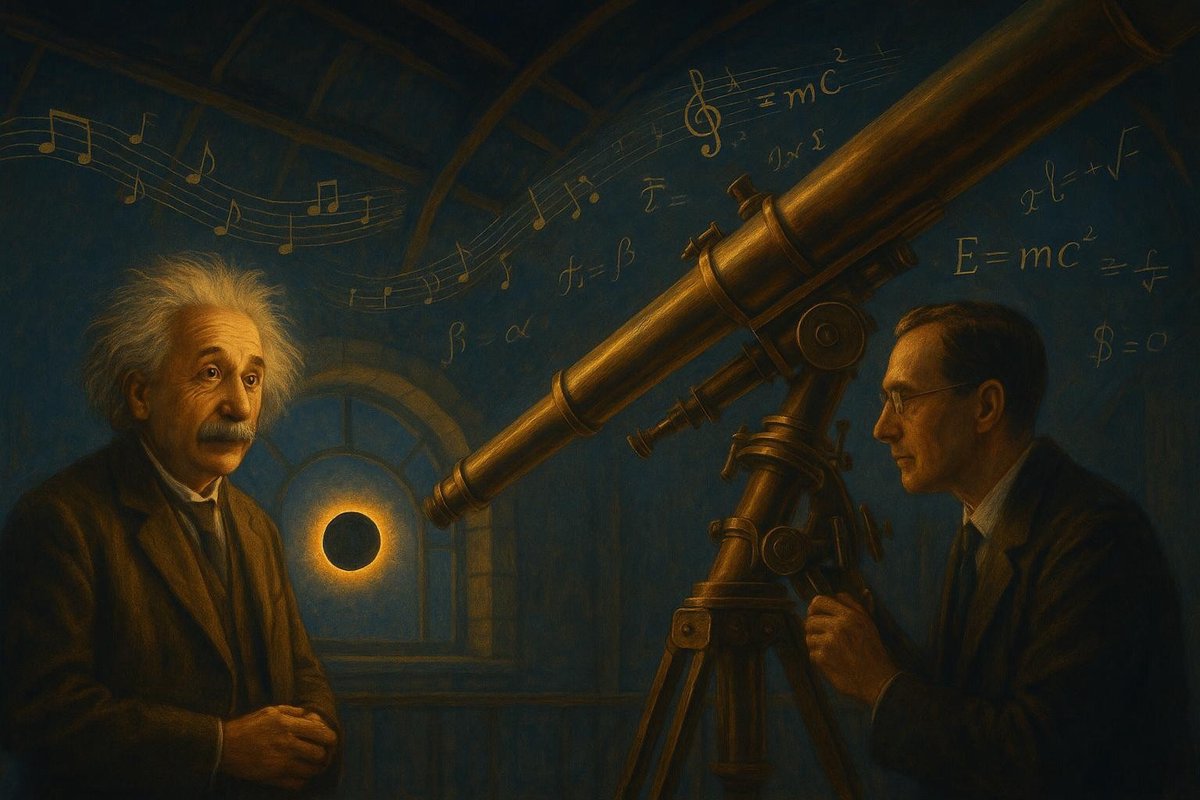
Imagine attending a symphony where every note flows seamlessly into the next, creating a tapestry of sound that redefines your sense of time. This musical fluidity finds a surprising parallel in Albert Einstein’s theory of relativity, which transformed our understanding of space and time — bending light along its path, much like a melody weaving through the air.
Before Einstein: The Problem Context
Before the advent of Einstein’s theory, the understanding of space and time was dominated by Newton’s laws. For centuries, Newtonian physics reigned supreme, depicting the universe as a clockwork mechanism with absolute space and time. But this framework had its cracks, especially under extreme conditions such as high velocities or strong gravitational fields.
- Newton’s laws couldn’t explain the peculiar behavior of light.
- Scientists grappled with anomalies in Mercury’s orbit.
- Light’s constancy appeared paradoxical in a Newtonian framework.
In the early 20th century, an intellectual climate rife with curiosity and the quest for deeper understanding set the stage for a scientific revolution. The cultural zeitgeist was one of innovation and challenge to established norms, which allowed Einstein’s groundbreaking ideas to flourish.
The Birth of Relativity: Theoretical Breakthrough
In 1905, Albert Einstein published his special theory of relativity, shattering classical perceptions. He proposed that the laws of physics are the same for all non-accelerating observers, and he introduced the revolutionary concept that the speed of light is constant. Later, in 1915, his general theory of relativity further expanded these ideas.
- Einstein viewed space and time as interwoven into a four-dimensional fabric.
- Gravity emerged not as a force but as curvature of this spacetime fabric.
- Imagine space and time as a vast, flexible sheet — a vision of elegance akin to the flowing composition of a symphony.
Einstein’s thought process was rooted in visualizing complex ideas as simple, intuitive scenarios — his famous thought experiments. Like a composer crafting a symphony, he saw the universe as a harmonious entity, where bending paths of light were akin to a musical motif transcending traditional boundaries.
Supporting Evidence: Observing the Symphony
In 1919, during a total solar eclipse, British astronomer Sir Arthur Eddington provided the first empirical evidence supporting Einstein’s theory. The observed deflection of starlight by the sun confirmed Einstein’s predictions.
- Light curves around massive objects, akin to a river bending around a rock.
- The eclipse allowed direct measurement of starlight bending, a cosmic performance echoing musical crescendos.
- This event marked a pivotal moment in science, akin to an audience’s applause after a symphony’s finale.
No wonder this discovery captured the public’s imagination, illustrating how abstract mathematical equations could describe the dance of celestial bodies, much like musical notes on a page translate into melody.
Modern Relevance: Relativity’s Ongoing Symphony
Today, Einstein’s theory of relativity continues to resonate in various fields. From GPS technology, which relies on precise time measurements adjusted for relativistic effects, to understanding black holes and the expanding universe, relativity remains foundational.
- Relativity’s principles guide the pathfinders of modern physics.
- Cosmic phenomena are studied with an appreciation akin to analyzing a symphony’s intricate layers.
- The interplay of mass, energy, and spacetime forms a universal melody.
As time goes on, Einstein’s insights remind us of the potential for human thought to transcend limits, much like a composer blending notes to create harmony. The bending of light and time continues to inspire wonder, encouraging future symphonies of discovery.
In retrospect, Einstein’s vision and intellectual courage reveal that the harmony between seemingly disparate ideas can lead to revolutionary insights. Just as a symphony’s notes require each other to create music, so too do the concepts of space, time, and gravity unite to craft our understanding of the cosmos.
Fuel Someone Else’s Curiosity
Share this article with someone who loves science or music, and let them ponder the connections between light, time, and harmony. Encourage them to explore and question, as Einstein did, to imagine what other symphonies await discovery.

Leave a Reply